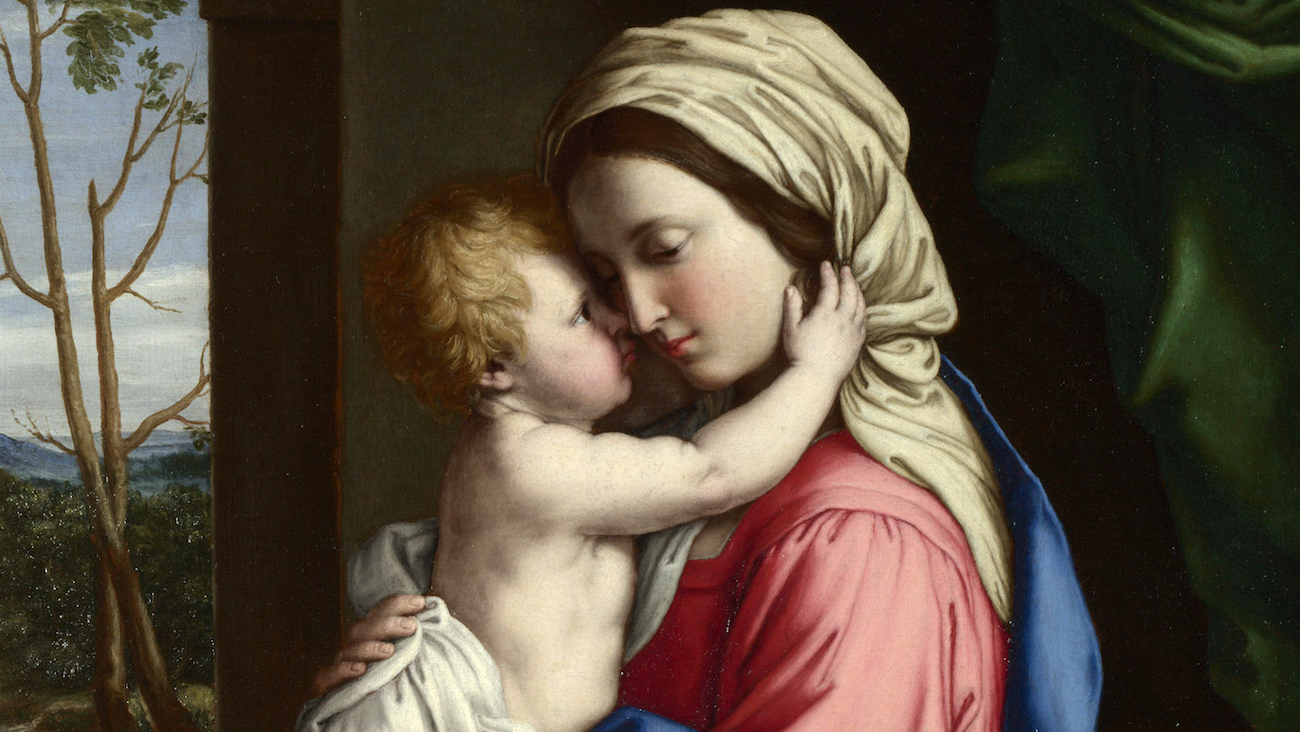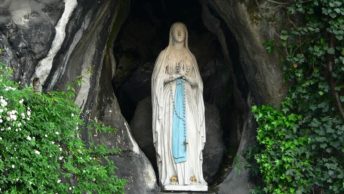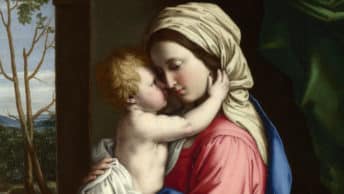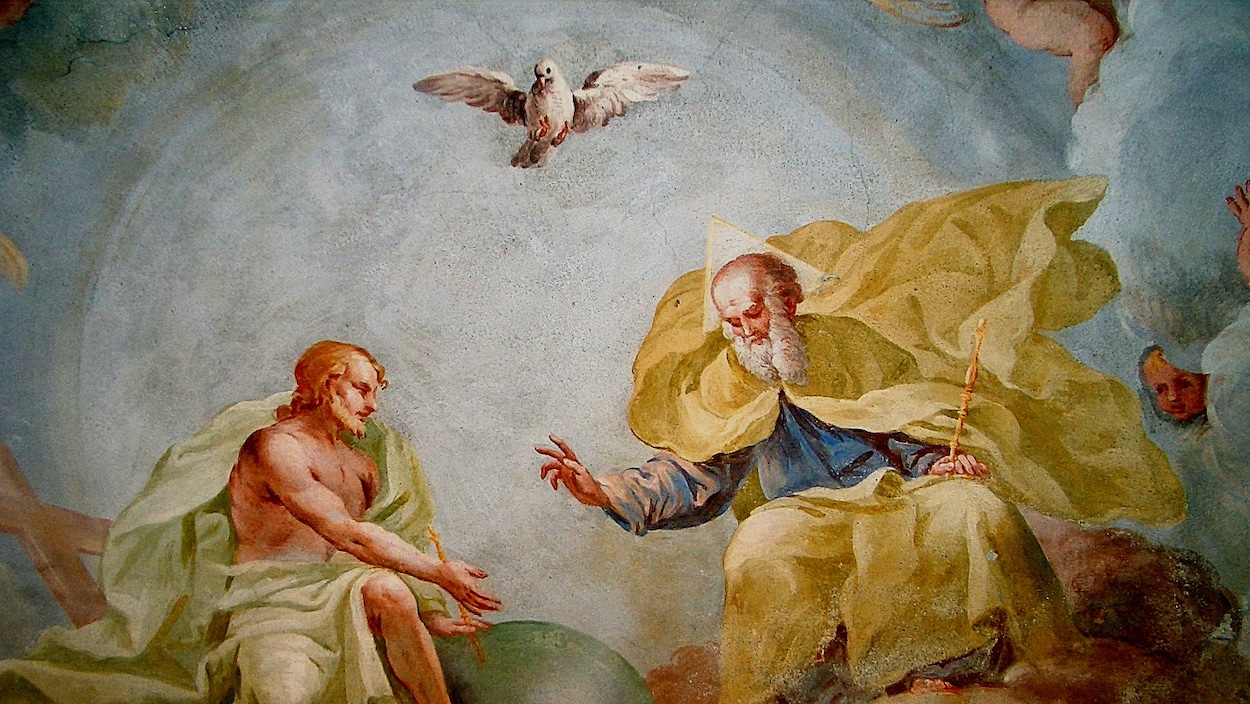The website, HubSpot, notes that: Snapchat has 150 million daily active users, Facebook experiences 300,000 updates every minute, and Instagram has 95 million photographs shared on its platform each day. Outside of these three, there are so many more Apps that could be loaded on our smartphones, each having the potential to consume precious seconds, minutes, and hours. In a certain sense, our dependence upon these electronic devices have made them our constant companions.
On the Solemnity of Mary, the Holy Mother of God, I point this out because there is near certainty that millions of images would be generated in an effort to document the sacred scene unfolding in the Gospel of Luke (2:16-21). Assuming that our electronic documentation begins from the outside in, we would note the presence of angels, animals, and shepherds.
Now throughout the ages, theologians have questioned why these onlookers were present on that Holy Night.
The angels. Their presence seems obvious, for they had been instrumental in setting the scene throughout salvation history. As such, they have been given a front-row seat, thereby allowing them to continue praising God and sing: “Glory to God in the highest, and on earth peace to men of good will!”
The animals. In a reflection by Pope Benedict XVI entitled, St. Francis and the Crib, the Holy Father noted that “according to the instructions of St. Francis of Assisi, ox and ass were present in the cave of Greccio.” Why? He cites Isaiah 1:3: “The ox knows its owner, and the ass its master’s crib; but Israel does not know, my people do not understand.”
The shepherds. They brought gifts and adored Him. But after doing so, what did they do? They “returned, glorifying and praising God for all they had heard and seen, as it had been told them.” (Lk 2:20)
But at the conclusion of millions of photographs having been snapped and shared, I wonder. Is there a possibility that the most important perspective of the Nativity remains undetected? My answer is—yes. For despite the fact that our manmade devices captured the external and visible, the reality is that Mary did not ponder the Birth of Jesus through an App.
Rather, she reflected upon this mystery through her heart.
Now in Catholic circles, the mention of the word, heart, brings to mind images of the Sacred Heart of Jesus or Immaculate Heart of Mary. Regarding Jesus, we focus upon the infinite ways His divine heart overflows with love for His people. And regarding Mary, we center upon the love within her heart for Jesus and God. For her love always says yes-–to Jesus!
At the Annunciation, Mary was visited by a mighty angel, Gabriel. He said to her: “Do not be afraid, Mary, for you have found favor with God.” (Lk 1:30). And after pondering this in her heart, she said—yes! “Behold, I am the handmaid of the Lord; let it be to me according to your word.” (Lk 1:38)
Then there was the time when Mary (and Joseph) had traced their paths for three days in search of the “lost” Jesus. After finding Him in the Temple, Mary said to the Divine Child: “Son, why have you treated us so?” And Jesus said to her: “Did you not know that I must be in my Father’s house?” (Lk 2:48-49) Here again, she supplied a simple yes from deep within her heart.
At the beginning of His public ministry, Mary was with Him during the Wedding at Cana. (Jn 2:1-11) When the wine ran low, Jesus instructed the servants to fill the six stone jars with water. And Mary’s response: “Do whatever He tells you.” (Jn 2:5) It was though Mary’s heart had said: “Yes, Son, begin your ministry.”
During the Passion, Mary witnessed all that Jesus endured for the salvation of humanity. Nevertheless, despite her broken heart, she seemed to say “Yes, I understand.”
Such was the faith of our Blessed Lady. While not fully understanding God’s plan for her, she placed her trust in Him and proclaimed “let it be to me according to your word.” Although not fully understanding Jesus’ mission, Mary trusted Him. And while gazing upon her Son’s Passion, she trusted that “in the end, all would be well.” Her yes to Jesus proclaimed that everything belongs to her Son!
But what about us? Do we follow Mary’s lead and listen for God’s voice in our lives? Do we allow God to stretch our hearts in ways that His will might be accomplished in our lives? Like the shepherds of old, do we proclaim Him in the public square and praise God for all we have heard and seen?
In Pope Benedict’s reflection, he asked:
“Who are the ox and ass today, who are my people who do not understand? Are we far distant from the stable because we are too fine and sophisticated for it? Do we, too, get so caught up in scholarly interpretation of the Bible, in establishing the inauthenticity or the genuine historical places, that we become blind to the child himself and perceive nothing of him? Are we not all too often in Jerusalem, in the palace inside ourselves, our own vainglory, our fear of persecution, rather than able to hear the angel voices in the night, to go there, and to worship?”
Today, may we pray that we know our Master. And listen intently to His voice.








